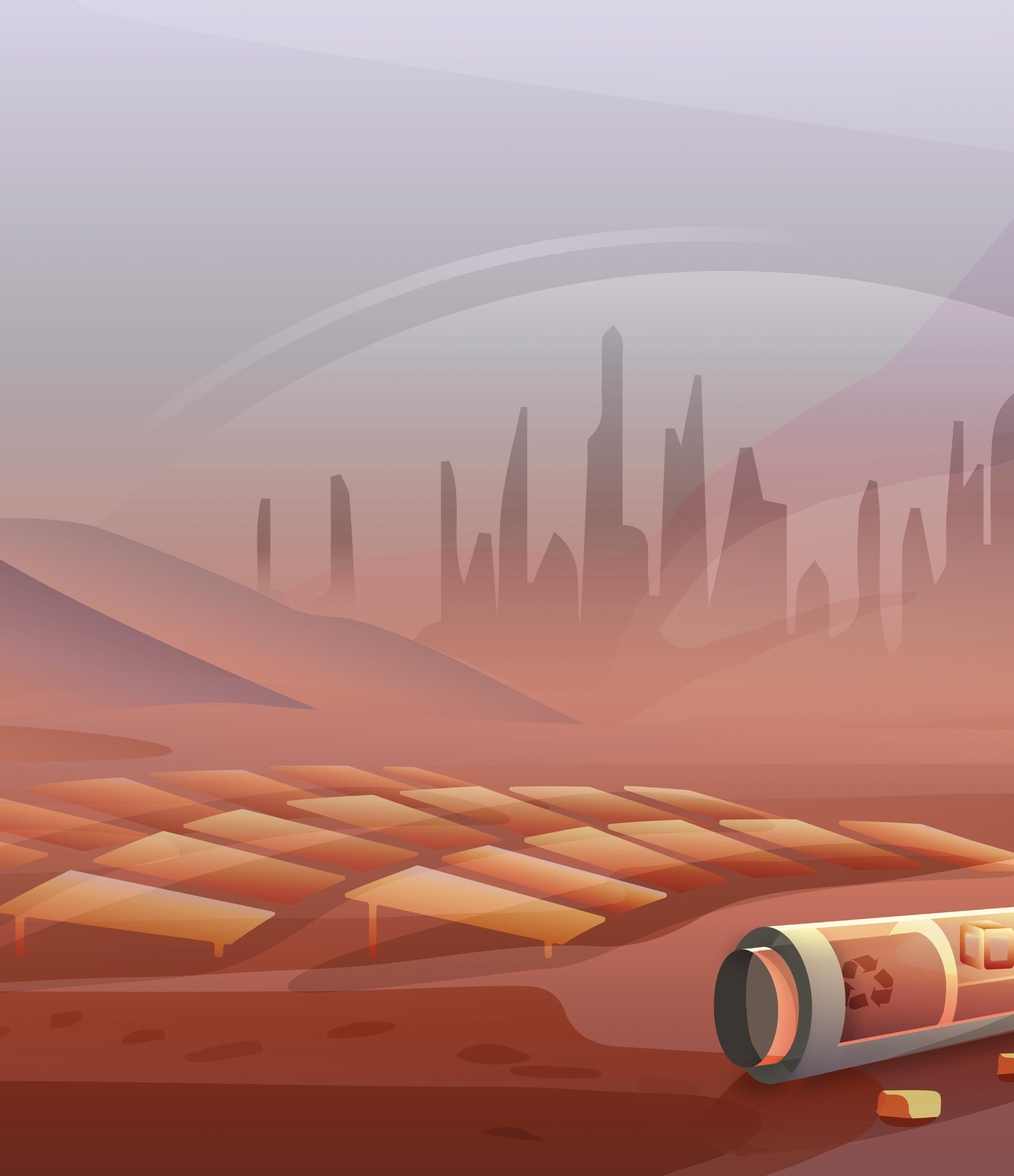
3 minute read
FUTURE SCIENCE
Supporting a mission to Mars
As the concept of sending a long-term team of astronauts, scientists, and other specialists to Mars to setup a habitat becomes more realistic, NASA is asking scientists and engineers to look at solutions to some of the many problems that will confront the mission’s day to day operations.
Advertisement
DISCOVERING THE BEST POWER OPTIONS
One question being asked is: what is the most practical way to power future Mars missions? The seemingly simple question took UC Berkeley engineering students Anthony Abel and Aaron Berliner four years of hard work to figure out.
Most scientists and engineers who have thought about the logistics of living on the surface of the Red Planet have assumed that nuclear power is the best alternative, in large part because of its reliability and 24/7 operation. Solar power, on the other hand, must be stored for use at night, which on Mars lasts about the same length of time as on Earth. And on Mars, solar panels’ power production can be reduced by the omnipresent red dust that covers everything.
A new study, recently published in the journal Frontiers in Astronomy and Space Sciences, used a systems approach to compare the two technologies for a six-person extended mission to Mars involving a 480-day stay on the planet’s surface before returning to Earth.
“If humanity collectively decides that we want to go to Mars, this kind of systems-level approach is necessary to accomplish it safely and minimize costs in a way that is ethical. We want to have a clear-eyed comparison between options, whether we’re deciding
which technologies to use, which locations to go to on Mars, how to go, and whom to bring,” said co-first author Anthony Abel, a graduate student in the Chemical and Biomolecular Engineering lab of Douglas Clark.
“Photovoltaic energy generation coupled to certain energy storage configurations in molecular hydrogen outperformed nuclear fusion reactors over 50% of the planet’s surface in our research,” said co-author Aaron Berliner, a bioengineering doctoral student in the Arkin lab.
Their published findings showed that solar power was more economical toward the equator and nuclear power would be more efficient toward the poles. Read more about this research at chemistry.berkeley.edu/marspower.
USING MATERIALS AT HAND TO PRODUCE FOOD AND SUPPLIES FOR A MARTIAN MISSION
Stefano Cestellos-Blanco will receive his Ph.D. this May from the College of Chemistry. He entered the College as a graduate student in the lab of Peidong Yang in 2016. He didn’t plan to figure out how to manufacture sugar on Mars as part of his research but what turned out to be an after-hours research project, stimulated by a NASA competition to spin sugar directly from carbon dioxide, is exactly what he and fellow scientists YiFan Li and Michael Ross accomplished.
CO2 is an abundant material on Mars. NASA was interested in a conversion process that would turn CO2 into sugar with the aim of feeding it to microbes that will make more complex materials, like food or drugs, for use by astronauts or settlers on Mars.

For the competition, the team demonstrated that the Formose reaction using formaldehyde, potentially from thermochemical CO2 fixation, and glycolaldehyde from CO2 electrosynthesis, generates sugars — from three-carbon sugars up to eight-carbon sugars — in about four hours, within the time frame specified in the competition.
“Converting CO2 directly to sugar is a pretty tall task that had never been demonstrated before, and NASA not only wanted you to demonstrate that you could do it, but also within a few hours, which is a relatively short amount of time,” Cestellos-Blanco said. “The individual parts of our process had been reported before, but no one knew that you could put them all together and essentially come up with a pathway to produce useful sugars from CO2.”
“We made a soup of sugars and have been able to identify which sugars those are. We also went ahead and fed the sugars to E. coli and grew them in cultures,” he continued. Read more about this project at chemistry.berkeley.edu/marssugar.










